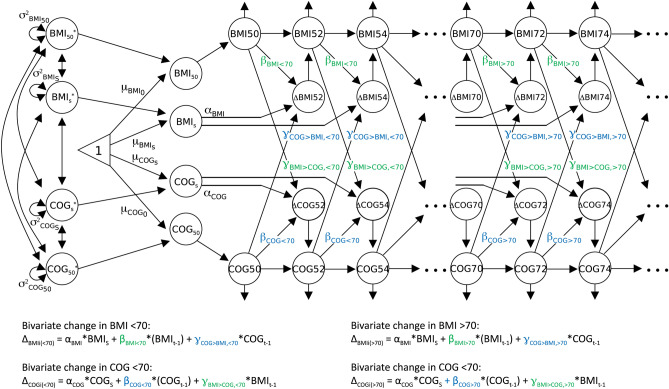Figure 1.
Path diagram of the bivariate dual change score model with two slopes, allowing for different rates of change before and after age 70. Body mass index (BMI) and cognitive abilities (COG) in each age category (BMI50, BMI52…; COG50, COG52…) are modeled. From the left, BMI50, BMIS, COG50, and COGS represent intercept level (at age 50) and slope of BMI and cognitive ability (asterisks represent their standardized scores), together with their estimated mean levels (, , , ) and variances (, , , ). αBMI and αCOG represent the constant linear change related to the slopes, and βBMI and βCOG represent the proportional non-linear change. γBMI>COG represent the coupling effect of BMI on cognition, and γCOG>BMI that of cognition on BMI. Univariate change in BMI at age = i, before age 70, is determined by the sum of the constant change in relation to the slope (αBMI * BMIS) and the proportional change in relation to BMI level at the preceding occasion (βBMI<70 * BMIt−1). For bivariate change in BMI, considering the effect of cognitive ability, the additional coupling effect in relation to cognitive ability at the preceding occasion is added to the formula (γCOG>BMI, <70 * COGt−1). Univariate and bivariate change in BMI after age 70 and in cognitive abilities before and after age 70 is determined by the same formulas, using the corresponding parameters.

